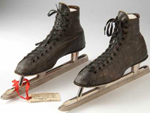MNopedia

This website offers brief articles on roughly 65 topics within Minnesota history. Each article in turn consists of text, images pulled from the Minnesota Historical Society, a bibliography, and a list of references (divided into primary, secondary, and web resources) for those interested in further information.
The content can be filtered by category (such as event or structure), topic (from "African Americans" to "women"), or era, making it easier to find items of interest.
Currently, the site is in beta testing. The Minnesota Historical Society invites comments from all site users, and plans to greatly expand the number of available articles throughout 2012. In the meantime, there's a wealth of information available ranging in content from the oldest sauna in the state (and most likely the country) to a major 1800s African American newspaper.